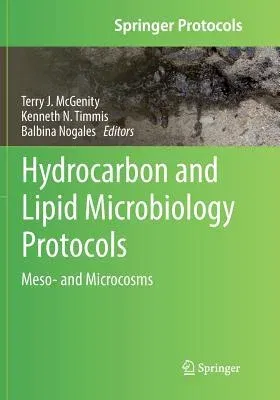This Volume describes methods for simulating natural environments by
using reproducible and controllable meso- and microcosm experiments to
analyse hydrocarbon-degrading microorganisms and to test hypotheses. It
presents important aspects of the preparation of experimental set-ups,
hydrocarbon application and sampling, and features protocols for
experiments with different types of samples, such as biofilms, aquatic
systems (e.g. groundwater, streams), and sediments, including
oscillating oxic-anoxic mesocosms, as well as for in-situ
experimentation in subtidal and deep sediments. Two chapters are
dedicated to cultivation under high-pressure conditions, and several
chapters include protocols for processing samples for downstream
chemical, microbial or activity analyses. Several of the approaches
presented are generic and will benefit anyone embarking on designing
meso- and microcosm experiments. Hydrocarbon and Lipid Microbiology
Protocols
There are tens of thousands of structurally different hydrocarbons,
hydrocarbon derivatives and lipids, and a wide array of these molecules
are required for cells to function. The global hydrocarbon cycle, which
is largely driven by microorganisms, has a major impact on our
environment and climate. Microbes are responsible for cleaning up the
environmental pollution caused by the exploitation of hydrocarbon
reservoirs and will also be pivotal in reducing our reliance on fossil
fuels by providing biofuels, plastics and industrial chemicals. Gaining
an understanding of the relevant functions of the wide range of microbes
that produce, consume and modify hydrocarbons and related compounds will
be key to responding to these challenges. This comprehensive collection
of current and emerging protocols will facilitate acquisition of this
understanding and exploitation of useful activities of such microbes.

